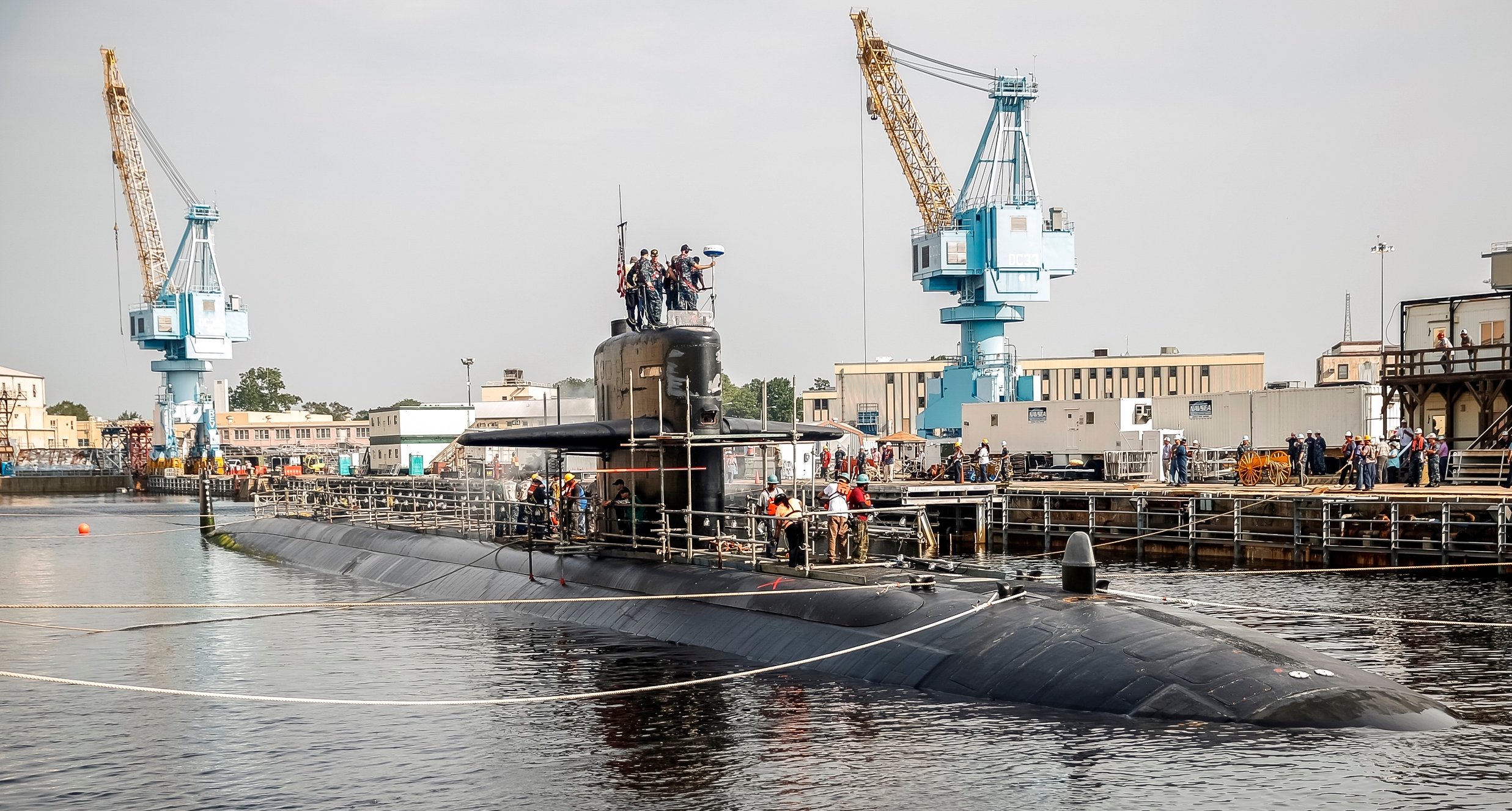
The federal government hiring freeze signed last week by President Donald Trump applies to all Navy shipyards and repair facilities despite an exemption for “national security or public safety responsibilities,” but the Defense Department may make some exemptions before the 90-day hiring freeze expires.
Trump signed a presidential memorandum on Jan. 23 stating that all civilian employees in all federal departments and agencies would be subject to a hiring freeze until each department submits a long-term plan to reduce the size of the workforce through attrition, with the plans due within 90 days.
Despite the national security clause, Defense Department spokeswoman Lt. Col. Gabrielle Hermes told USNI News that the Pentagon has made no exemptions yet. She noted, though, that “DoD will publish further guidance regarding implementation and exemptions as soon as possible.”
Still, the hiring freeze comes as the Navy finds itself thousands of employees short at its four public shipyards, exacerbating a problem that has already hurt Navy readiness. Attack submarine USS Boise (SSN-764) skipped the start of its maintenance availability this summer due to lack of capacity at public shipyards and is now not qualified to submerge – making the sub “essentially a surface ship” until any yard has the capacity to take on the Los Angeles-class sub’s maintenance needs.
“Rather than induct her and keep her in the yard for – (engineered overhaul) should take about 22 months – and put her in there for 48 months because we don’t have the people, we made a rational decision not to put her into the yard and focus on the work that we had because we didn’t have enough people,” Commander of Naval Sea Systems Command Vice Adm. Tom Moore said earlier this month.
“The downside is, we took a submarine who is now essentially a surface ship because without the maintenance I can’t submerge her, so I’m going to take this ship, this submarine, and it’s still an active duty submarine but it’s not available to the combatant commanders. That’s a problem. And I’m probably going to put her in the private sector in two years at a cost that’s significantly higher to me than if I did it in the public sector.”
When sequestration first went into effect, a Defense Department civilian hiring freeze in 2013 – coupled with furloughs for civilians – caused a major readiness crisis for the service, which no longer had the right sized workforce on any given day to get through the required amount of maintenance and modernization work. The Navy is still digging out from that now at its shipyards, aircraft depots and other locations that rely on civilian employees to keep the Navy platforms modernized and running reliably.
In response to the hiring freeze, all eight senators from New Hampshire, Maine, Washington and Hawaii sent a letter to Defense Secretary James Mattis asking that shipyard workers be granted an exemption.
“Our request to exempt Department of Navy shipyard civilian employees from the Presidential Memorandum is not without precedent. In his May 14, 2013, memorandum concerning sequestration-related furloughs, then-Secretary of Defense Chuck Hagel exempted Navy shipyard employees because ‘it would be particularly difficult to make up delays in maintenance work on nuclear vessels and these vessels are critical mission success,'” the letter reads.
“Our public shipyards perform the same mission critical work today and require hiring discretion to meet their workforce needs so this work can be completed without delay.”
“The public shipyards are currently hiring hundreds of new employees who must complete years of training before they are able to maintain and repair naval vessels,” the letter continues.
“A civilian hiring freeze at naval shipyards will severely impact this training pipeline resulting in maintenance delays and higher costs. The Presidential Memorandum states that the freeze is not intended to impact national security, however, freezing the hiring of civilian employees who will support critical fleet maintenance will directly undermine national security.”
During campaign season, Trump frequently talked about “draining the swamp” in Washington to rid the workforce of special interests and corruption. While those speeches at first focused on cracking down on lobbyists and imposing term limits on Congress, he eventually began discussing a federal hiring freeze and reducing the workforce as part of the same “drain the swamp” theme.
The memo Trump signed last week applies to all federal civilian jobs regardless of the source of funding that pays for that position. It also forbids federal departments and agencies from relying on contractors to perform that work, which is an option the Navy sometimes relies on when it needs help at its yards. Though only the four public shipyards may perform work on the nuclear components of submarines and aircraft carriers, contractors from private yards are often brought in to perform work on hull, mechanical and electrical (HM&E) and other non-nuclear components of the ship.
Following the memo, the Office of Management and Budget released guidance on Jan. 25 that noted that “an individual who has received a job offer/appointment prior to January 22, 2017, and who has received documentation from the agency that specifies a confirmed start date on or before February 22, 2017 should report to work on that start date,” Hermes told USNI News. “If an individual has received a job offer/appointment prior to January 22, 2017, and has received documentation from the agency that specifies a confirmed start date after February 22, 2017, or does not have a confirmed start date, the Agency head should review the position to determine whether the job offer/appointment should be revoked, or whether the individual should report for duty on an agreed upon start date.”





